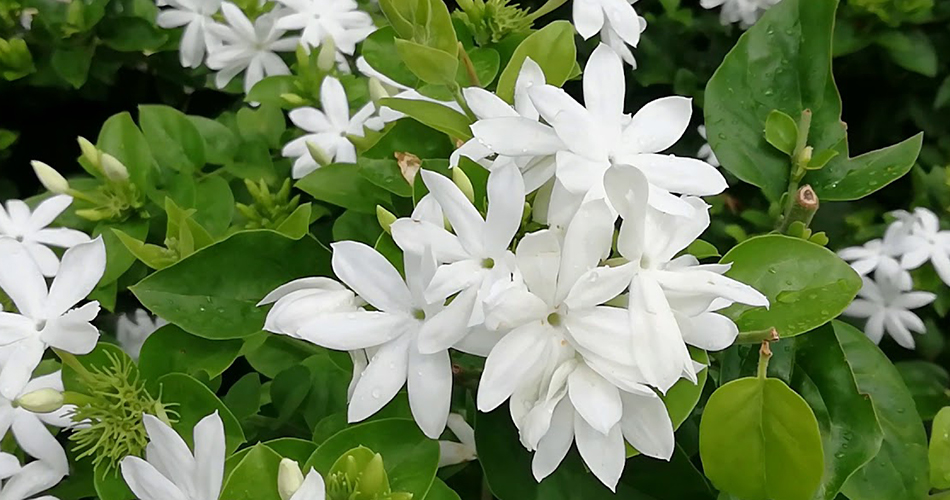Jasmine is a climbing, trailing, or spreading shrub of the olive family. Most of the more than 100 species are natives of the warmer parts of Europe, Asia, and Africa. Some keep their leaves all year, and some lose them in the autumn. All jasmines have shiny dark-green leaves and bear small white or yellow flowers. The flowers are usually sweet-smelling and grow in clusters, followed by small berries. Plants usually are grown from layers (a branch bent over into soil) or cuttings rather than horn seeds.Among the jasmines grown in the United States a few are found as far north as Washington D.C. These include the yellow-flowered Italian jasmine, from Asia; the primrose jasmine and the winter jasmine, which has yellow blossoms, both from China; and the common white jasmine, from Persia. Common farmer south is the Catalonian or Spanish jasmine, from India, much grown in Europe. Oil from the pinkish-white flowers of this variety is used in making perfume. The flowers of one species of jasmine are used in China to perfume tea. In Turkey pipe stems are made from the wood of another. Several plants with fragrant flowers called jasmines belong to other plant groups. Cape jasmine, for example, is a species of gardenia. Carolina, or yellow jasmine (Jessamine), is an evergreen vine with bright, trumpet-shaped flowers. The drug, gelsemium, is made from its roots. The star or Confederate jasmine is a white-flowered evergreen of the dogbane family.


Be First to Comment